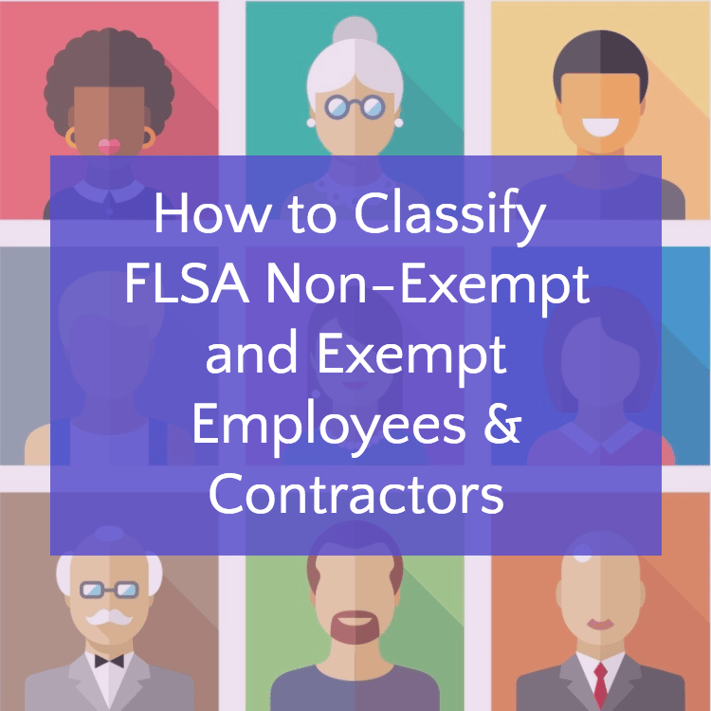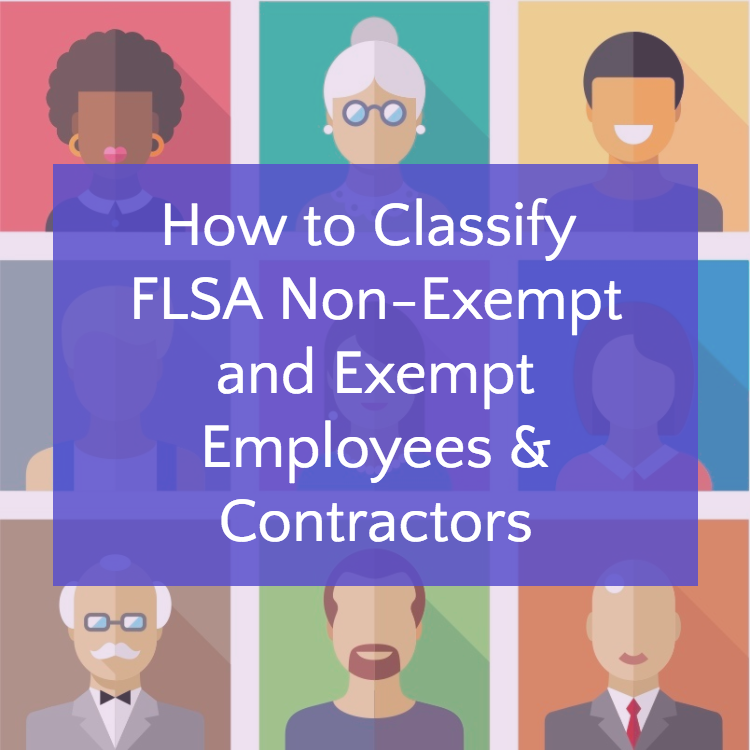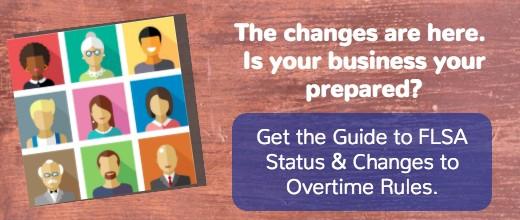Update: As of July 1, 2024 changes have been implemented to the Fair Labor Standards Act. For most up to date information, visit the Department of Labor website or schedule a consultation with Fuse.

FLSA Non-Exempt. Or is it FLSA Exempt? Exempt from what exactly? Between the FLSA changes to overtime rules and the increases in civil monetary penalties, employers can't ignore employee classifications.
The new overtime rule could make more than 4 million workers in the US eligible for overtime pay. If you haven’t classified your employees with the correct FLSA status, you could land some big penalties, an overtime wage claim, or worse—a lawsuit. Prepare your organization by classifying your employees correctly. Are they employees or independent contractors? FLSA non-exempt or exempt?
Employee or Independent Contractor?
First, HR managers need to know the difference between employees and independent contractors.
Why should you know the difference between an employee and an independent contractor? The main reason comes down to taxes and withholdings. An employer will withhold income taxes, withhold and pay Social Security and Medicare taxes, and pay unemployment tax on employee wages for employees. Generally, an employer will not withhold or pay taxes on payments to independent contractors.
If you define your workers incorrectly, you could be liable for unpaid taxes and fines.
The IRS provides three Common Law Rules for determining worker status. Is the worker an independent contractor or employee? Ask these questions:
- Behavioral: Does the company control or have the right to control what the worker does and how the worker does his or her job?
- Financial: Are the business aspects of the worker’s job controlled by the payer? (these include things like how worker is paid, whether expenses are reimbursed, who provides tools/supplies, etc.)
- Type of Relationship: Are there written contracts or employee type benefits (i.e. pension plan, insurance, vacation pay, etc.)? Will the relationship continue and is the work performed a key aspect of the business?
If the answer is ‘yes’ to these questions, your worker is probably an employee, not an independent contractor. Though, the IRS says there is no magic formula that determines status. The most important thing to look at when identifying a worker is the entire relationship between the worker and employer. Then, document all information about this relationship.
Economic Realities Test
When FLSA interpretation become cloudy, courts may rely on the economic realities test to determine worker status. This test looks at the dependence a worker has on the business for which he or she works and the nature of the business relationship.
Here’s a brief overview of the test and the factors to consider when determining a relationship under the FLSA:
- Integration: an independent contractor does not perform work that is integral to the employer’s business.
- Profit & Loss: an independent contractor’s managerial skill can affect the opportunity for profit and loss.
- Investment: an independent contractor makes a significant investment in his own business (outside of the employer’s).
- Skill and Initiative: an independent contractor performs work that requires special skill and initiative.
- Length of Relationship: an independent contractor doesn’t have an ongoing or permanent relationship with clients.
- Control: a company does not control how, when, or where the independent contractor performs work for the client.
Follow these best practices to maintain a proper relationship with your independent contractors. When working with an independent contractor, you should never:
- Hire a former employee as an independent contractor
- Convert an independent contractor to an employee
- Hire an independent contractor to perform the same work as employees
- Prohibit an independent contractor from working with other companies
- Control how, when, or where an independent contractor performs work
- Provide training or tools to an independent contractor
- Reimburse an independent contractor for expenses
Next Step: Determine Employee FLSA Status
Now that you’ve determined whether a worker is an employee or an independent contractor, you must determine FLSA status for employees. All employees are classified with an FLSA status: FLSA non-exempt or FLSA exempt. An employee’s FLSA status determines their eligibility for FLSA coverage, namely overtime pay and minimum wage.
How do you define FLSA status classifications?
FLSA NON-EXEMPT: The provisions of the FLSA cover non-exempt workers for minimum wage standards, overtime pay, and other labor standard protections. Employers must pay their FLSA non-exempt employees the federal minimum wage (at least) for hours worked. For all hours worked over 40 hours in a workweek, the employer must pay non-exempt employees overtime (time and one-half the regular rate of pay).
FLSA EXEMPT: Unlike non-exempt workers, FLSA coverage does not protect exempt workers. Employers pay exempt employees for the job they do, not the hours it takes them to do the work. Simply put, exempt employees are exempt from coverage.
In some cases, other federal labor laws override the FLSA. The FLSA states that, as a general rule, if another federal labor law governs a job, the FLSA does not apply.
How do you determine if an employee has FLSA non-exempt or exempt status?
To determine an employee’s FLSA status, you must answer the following questions:
- Does the employee earn a salary?
- Does the employee earn at least $23,600 per year or $455 per week? (Effective December 1, 2016: New overtime rules increase this threshold to $47,476 per year or $913 per week.)
- Does the employee’s role require certain responsibilities or functions that the Department of Labor considers exempt duties?
With a few exceptions, employees must meet all three of the tests above to have FLSA exempt status (exempt from FLSA coverage). If an employee does not pass these tests, their classification is likely FLSA non-exempt. This means the employee is eligible for FLSA coverage.
Oftentimes, wage claims occur when an employee has been misclassified. To reduce the risk of claims, penalties, and lawsuits, be sure to define your workers and classify your employees correctly. And be ready when the overtime rules change on December 1, 2016. Get this guide to help you manage FLSA compliance in your organization.

